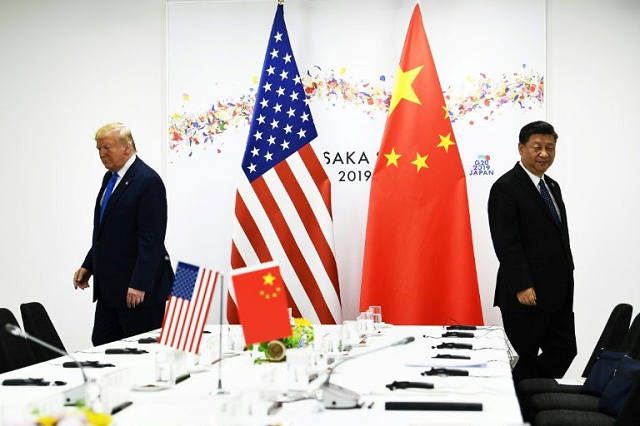
This was the same China that had confined itself in socialist norms and a communism that kept it at a clash with the Western world since its creation. This isolation was reversed with president Nixon’s 1971 visit to China, when the US lifted trade barriers that had hampered China’s development as a world economic player.
At that time the US saw in China a huge reserve of cheap labour ready to be harnessed for its backyard economic activities. The political implication of this offer meant the US would also be able to fracture the communist block so tightly knit between China and Russia. And perhaps this was also necessitated because of Japan’s growing monopoly in high-tech industries that were making it a global trade giant, even when the West had defeated its imperial greatness in WWII. China’s opening to Western trade was consequently going to push Japan into the punishment phase of its “two lost decades” of economic stagnation from 1991 to 2010.
For all such gains, the US had rallied the ideal of “globalisation” that facilitated its companies to become multinational under the forces of the free markets preached by the capitalist creed. Free markets meant that “profits” created in the markets would be the sole factor that would drive trade and investments around the world. States were not to protect their commerce from the behemoth of the free market as this force will only add to the resilience of all trading parties.
Yet the same principle when applied by China as it enters a phase when it can potentially dominate the global economy, is being seen by the US as “unfair competition” and according to the US Chamber of Commerce, a “strategy to use state resources to alter and create comparative advantage in these sectors on a global scale” — a strategy the West has been using all along. The critical allegation from the US, however, has been the theft of Intellectual Property from Western investors, who have been coerced to share the technologies of the industries they want to set in China.
Surely this allegation goes against the ideal of “traders being driven by markets alone” — as the same market profits have been leading US investors to invest in China in spite of their knowing of this obligation of technology transfer. This is only because Chinese partners had offered them cheap land, infrastructure, tax exemptions, cheap loans and hence, staggering profits.
All this was going on calmly but in 2015 China announced its Made in China (MIC) 2025 plan. This 10-year plan focused on intelligent manufacturing in several strategic sectors including aerospace, high-tech ship building, medical equipment, and energy and power. In the plan China would reduce its reliance on import of foreign technology and invest in indigenous innovations because China’s present monetary surplus allows it to invest heavily in its own research and development — a prerogative once owned by the West alone.
The special concentration on Smart Learning and Smart Manufacturing and on innovative fields like “new materials” and “information technology” would soon put China on a par with leading economies with high-tech industries such as the EU, Germany and the US — and in a position to challenge the global dominance of the West. This fear has forced the US into the protectionism that it had despised for so long. The trade war was thus based not on the theft of Intellectual Property, but on China’s growing ability to develop its own. And this war can be an attempt by the US to throw China in a kind of “two lost decades” that Japan has suffered by reducing the lucrativeness of doing business with China and diverting the markets to substitute venues.
One of such potential venues is the set of Southeast Asian states — not so far from China — that are swiftly becoming the intermediary sites for the manufacture of industrial parts and components. In the trade war the US will attempt to substitute its imports from China with imports from Southeast Asia. Global companies will also be shifting their investments away from China to avoid tariffs. However, China has an edge in influencing these states to its benefits as they are culturally and spatially closer. In the same vein China will also attempt to substitute its markets in other places around its world through its Belt and Road projects.
Huge investment diversion and industrial readjustments caused by this trade war would create gaps of both risk and opportunities for the states doing business with the two parties. In turn a substantial number of other countries may be forced to side with their benefactors and join the trade war, potentially dragging the world into another economic recession. According to a report an all-out trade war such as that could decrease the global GDP to about 3.8% lower than present.
Has the free market then been the force that has led China to aspire for a globalised capitalism, forsaking a benevolent socialism; and led the US to let go of the spirit of liberty, and to confine in isolation that was once considered a taboo of the communists? Does the “market” inspire our morals and ideologies? Is this realism or not the all-out advent of matter over human thought!
Published in The Express Tribune, September 19th, 2019.
Like Opinion & Editorial on Facebook, follow @ETOpEd on Twitter to receive all updates on all our daily pieces.
1731570357-0/elon-musk-(1)1731570357-0-405x300.webp)
-(1)1717678110-0/Kendrick-(1)-(1)1717678110-0-165x106.webp)










COMMENTS
Comments are moderated and generally will be posted if they are on-topic and not abusive.
For more information, please see our Comments FAQ